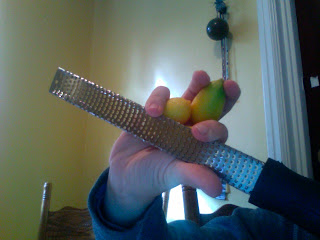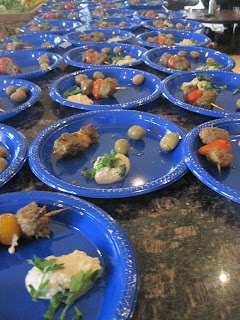

Mayonnaise is creamy, delicious, rich and…Paleo. For those of you missing your creamy dairy, make some mayonnaise and it should make you feel like you ate something creamy and cow-like. Mayonnaise is not supposed to be sweet and cloying. It should be complex and delicious.
Homemade mayo will include raw eggs, olive oil, mustard, sea salt and an acid like raw apple cider vinegar or lemon juice. The use of raw eggs calls for a conscious search for clean food. There is nothing dangerous about raw eggs if your own immune system is decently functioning, and if your eggs are from a farm that cares for its animals and grounds. Remember that salmonella bacteria is all around us. Kids and old folks or those with autoimmune diseases are the ones who suffer seriously from food poisoning. It doesn’t make sense for us to try to sterilize our food. It makes sense for us to repair our immune systems and to restore the microorganism populations that kill the pathogens in our guts.
Homemade mayo with raw eggs is an extremely enzymatically-rich sauce. Another way to improve your homemade mayo, to turn it into a super food, is to use liquid whey. Liquid whey is a blip in the Paleo approach since it is derived from dairy. Whey is the clear liquid you see on top of yogurt. Using whey enables you to create a lacto-fermentation process such as is used to make traditional saurkraut or Korean kimchi. Anybody who says hunter-gatherers did not eat fermented foods does not understand lacto-fermentation. This is different process from yeast-sugar fermentation which results in alcohol. In lacto-fermentation the process derives from lactic acid producing bacteria. These are many of the bacterial strains people pay money to get in a probiotic nutritional supplement. Lactic acid producing bacteria are the microorganisms that create an inhospitable habitat for pathogenic bacteria like salmonella. You can make your own lacto-fermented foods without whey, but it is an extremely hit-or-miss process which terrifies many people because we have lost the intuitive sense, as well as the food-crafting techniques, to recognize when our fermentation has gone correctly versus when we have cultivated the wrong types of microorganisms. Therefore, please keep in mind that you ABSOLUTELY CAN LACTO-FERMENT WITHOUT DAIRY. Using liquid whey makes the process easier.
Today I added 1 teaspoon of chipotle puree to my homemade mayo so that it made a creamy, spicy dressing for some mahi mahi chunks I had grilled the day before. Here is the recipe:
2 egg yolks + 1 egg at room temperature (or warm the blender jar)
¾ c olive oil (don’t use the extra virgin, green oil, use the cheaper variety or your may will have a decidedly olive oil flavor)
1/2t sea salt
2T raw apple cider vinegar
1/2t Dijon mustard
1T whey
Place all ingredients except olive oil in your blender and blend on low until well mixed, drizzle in the olive oil extremely slowly while the blender is running and then do the same with the whey. Leave at room temperature for 6-8 hrs, then refrigerate. It will last a few weeks. If you don’t use whey, refrigerate your mayo right away and it will only keep a week or so.
To make your own whey you have two choices.
1. If you have access to raw milk, pour raw milk into a quart jar and leave it for 2-3 days at room temperature until it separates. The clear liquid is whey.
2. Purchase a large container of unflavored, plain, whole milk, organic yogurt. Dump the whole thing into a thin, linen dish cloth, tie the dish cloth up and hang it from a hook at room temperature over a large bowl. Over about 24hrs all the whey will drain into the bowl. In the dish towel will be a cultured , cream cheese that if you have anyone in your life who eats dairy , will be a lucky beneficiary.


















































